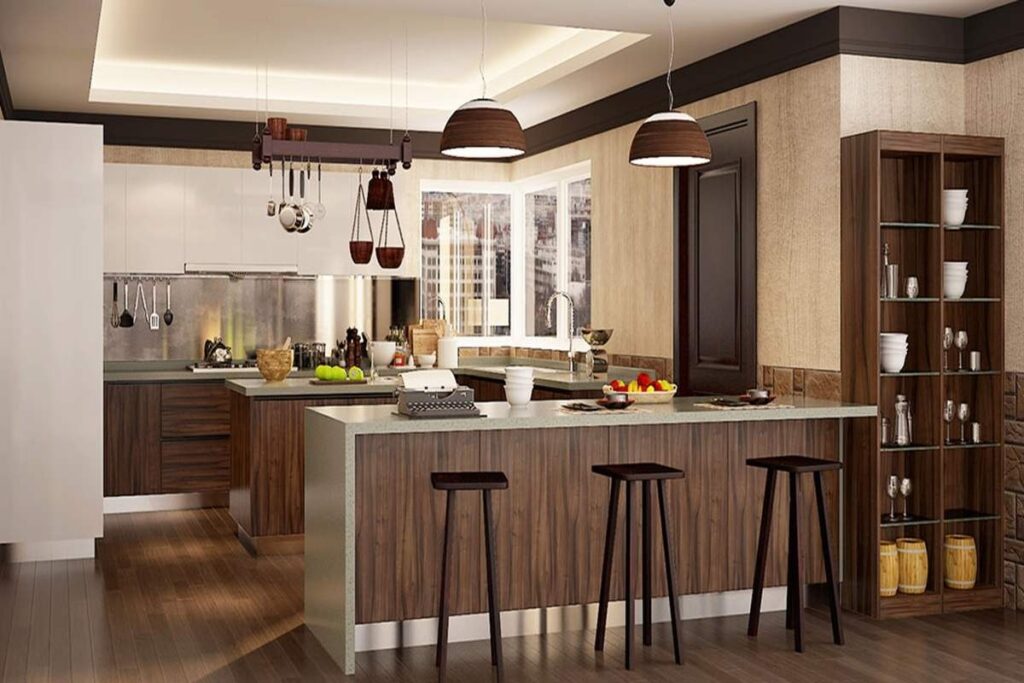Kitchen remodels have this funny way of starting with a simple thought like “I’d really love new countertops” and suddenly snowballing into full-scale renovations that leave you cooking microwave dinners in your living room for six weeks. I’ve guided hundreds of homeowners through this process, and I’ve noticed that cabinets invariably become the centerpiece of any kitchen renovation—both literally and figuratively.
Start with Function, Not Fashion
Before you dive into door styles and finishes, you need to get brutally honest about how you actually use your kitchen. Not how you aspire to use it or how it looks in magazines, but your real daily patterns.
Do you genuinely need that wine refrigerator? Will you actually use a built-in coffee station? Is a massive island practical for your cooking style, or will it just become a glorified mail collector? These questions might seem obvious, but you’d be shocked at how many clients get seduced by Pinterest without considering their true needs.
I once worked with a couple who insisted on floor-to-ceiling pantry cabinets because they looked stunning in their inspiration photos. Three months after installation, they called me back because they couldn’t reach anything above the fourth shelf. Sometimes practical trumps pretty.
Measure Twice, Order Once
What often surprises people is how unforgiving cabinet measurements are. Unlike other home improvements where you might have a quarter-inch wiggle room, cabinets demand precision. A 1/2-inch error can cascade into alignment issues across your entire kitchen.
Professional measuring seems expensive until you consider the alternative: cabinets that don’t fit. Most reputable cabinet dealers include measurement in their services, and it’s absolutely worth ensuring this step is handled by someone who does it daily, not occasionally.
And don’t forget to account for the unexpected. In older homes especially, floors aren’t level, walls aren’t plumb, and what looks like a standard 36-inch space on paper might actually measure 35 1/4 inches in reality. These small discrepancies add up quickly when you’re installing 15-20 cabinet units.
Budget Breakdown: Where to Splurge, Where to Save
Let’s talk about money. Cabinets typically consume 30-40% of a kitchen remodel budget, making them your largest single expense in most renovations. But not all cabinet elements deserve equal financial attention.
Splurge on:
- Box construction (the skeleton that holds everything together)
- Drawer slides and hinges (the working parts you’ll use thousands of times)
- Layout optimization (even budget cabinets in a great layout outperform luxury cabinets in a poor layout)
Save on:
- Decorative end panels (unless they’re highly visible)
- Interior organization (you can add these gradually after installation)
- Ultra-trendy door styles (they date more quickly than you’d think)
OPPEIN has built their reputation on balancing these considerations nicely, offering solid construction fundamentals while allowing customers to economize on less critical elements. Their modular approach lets you allocate your budget where it matters most.
Timeline Reality Check
Cabinets aren’t something you can order on Monday and install on Friday. Custom and semi-custom cabinets typically require 6-12 weeks from order to delivery, with some high-end manufacturers quoting even longer lead times. And this is after your design is finalized, which itself can take weeks of revisions.
I always tell clients to add a 20% buffer to whatever timeline they’re quoted. Supply chain hiccups, manufacturing delays, shipping issues—they happen to even the most reliable companies. Building this cushion into your expectations saves a lot of stress when the inevitable minor delays occur.
The Three Cabinet Categories
Cabinet shopping can feel overwhelming with the endless options, but they fundamentally break down into three categories:
Stock Cabinets: Pre-made in standard sizes, these offer the fastest delivery and lowest prices, but minimal customization. Good for rental properties or tight budgets.
Semi-Custom: The sweet spot for many homeowners, offering a range of modifications to standard sizes and features without the full custom price tag.
Full Custom: Built specifically for your space, these offer unlimited options but come with premium pricing and the longest lead times.
Come to think of it, most homeowners end up in the semi-custom space. The value equation makes sense: you get most of the benefits of custom without the astronomical price jump. Unless you have truly unusual space constraints or ultra-specific needs, semi-custom cabinets typically offer the best balance of quality, customization, and cost.
Working with a Cabinet Dealer: What to Expect
A good cabinet dealer does far more than sell you boxes with doors. They should function as part designer, part project manager, and part educator throughout your remodel.
The initial design consultation should involve lots of questions about how you use your space, not just what you want it to look like. If a dealer jumps straight to showing you door samples without understanding your cooking habits, storage needs, and pain points with your current kitchen, that’s a red flag.
Expect multiple design revisions. The first draft is rarely perfect, and a good dealer welcomes your feedback and adjustments. They should provide 3D renderings that help you visualize the finished space, not just flat floorplans that require spatial imagination.
And beware the dealer who never pushes back on any of your ideas. Sometimes the most valuable service a professional can provide is telling you when your dream feature won’t actually work in practice. You’re paying for expertise, not just order-taking.
Installation: The Make-or-Break Moment
Even the finest cabinets will look terrible if poorly installed. Cabinet installation is specialized work that requires experience, precision tools, and thorough understanding of how kitchens function.
When budgeting, don’t cut corners on installation. The cost difference between a mediocre installer and an excellent one is typically small compared to your overall cabinet investment, but the quality difference can be enormous. Many cabinet warranties actually become void if not professionally installed, which tells you how critical this step is.
Living Through the Process: Practical Tips
Let’s be real about something: kitchen renovations are disruptive. You’ll be without a functional kitchen for weeks, possibly months. But there are ways to make this more bearable:
- Set up a temporary kitchen elsewhere (basement, garage, dining room)
- Invest in quality small appliances (electric skillet, microwave, toaster oven)
- Pre-cook and freeze meals before demolition begins
- Build a simple plywood countertop over your washer/dryer for food prep
But don’t fool yourself about timing. When your contractor says “two more weeks” for the third time, having coping strategies already in place preserves your sanity.
Final Thoughts
Planning a kitchen remodel around cabinets means thinking about both the big picture (layout, style, budget) and the minute details (hinge quality, drawer organization, filler pieces). The most successful renovations balance both perspectives.
And remember—you’ll live with these cabinets daily for years, possibly decades. It’s worth investing the time upfront to get them right, even if that means extending your planning phase by a few weeks. In my twenty years of kitchen design, I’ve never had a client regret taking extra time to plan, but I’ve seen plenty who rushed decisions and lived with the consequences far longer than they’d have spent on proper planning.






